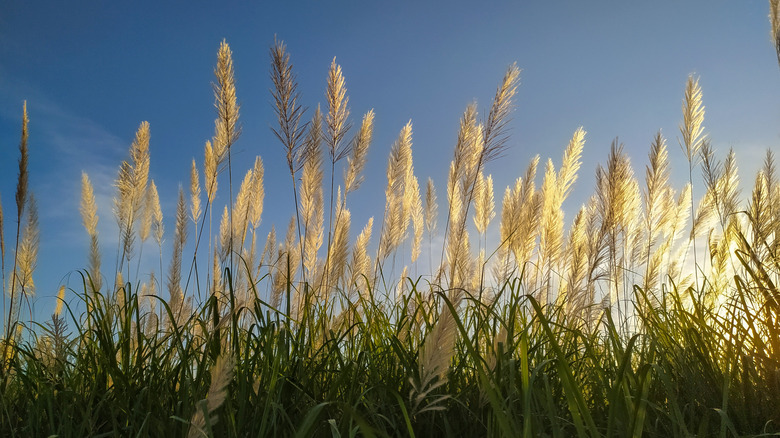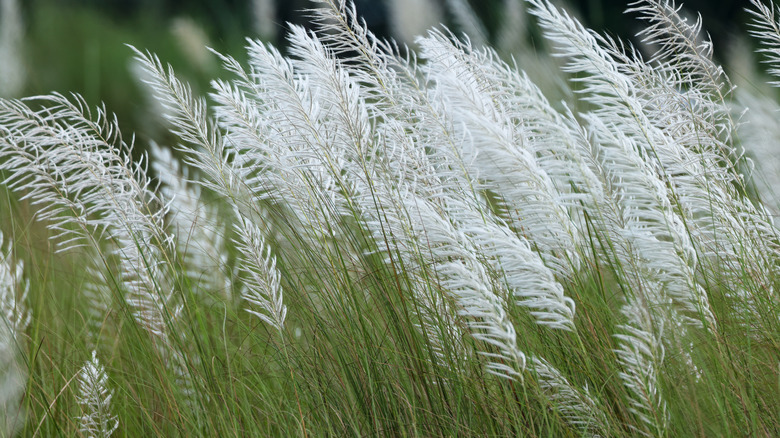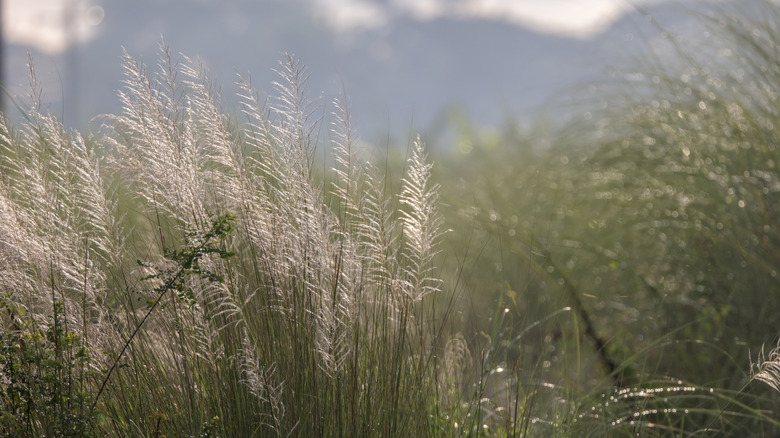This Plant Is So Problematic, It's Actually Banned In Several US States
Wild sugarcane (Saccharum spontaneum) is one of those genie-out-of-the-bottle errors in the history of invasive species. Among invasive garden plants to avoid, wild sugarcane should be near the top of your list. Most likely native to India and Southeast Asia, it was introduced in the United States in the 1950s for agricultural purposes, but soon escaped and spread throughout tropical and subtropical areas of the U.S. Not only did it turn out to be a poor source of sugar, it's been a major nuisance in the states where it grows. Growing it, importing it, or transporting it across state lines can get you into legal trouble.
Growing mostly along the coast of states bordering the Gulf of Mexico, but also in Hawaii and Puerto Rico, wild sugarcane is such an invasive pest that it has been on the USDA's Federal Noxious Weed list since 1981. Permits are required for importing or transporting wild sugarcane, including its seeds, across state lines. Federal officials have the authority to seize and destroy wild sugarcane and other noxious weeds or quarantine areas of infestation. Several states have added their own restrictions. Florida completely prohibits any use of the plant, which has been found in the Everglades. Even states like Massachusetts and Minnesota, where the plant is highly unlikely to grow, have banned it. So, why is this plant set off so many alarm bells?
Wild sugarcane is an environmental disaster
Wild sugarcane is one tough perennial: Tall and aggressive, it can shade out native plants. It's an attractive host to many pests and diseases which can then spread to other species. It is an opportunist weed, growing in abandoned farmlands and other wastelands. Fire is one of its evolutionary strategies. Wild sugarcane burns easily, setting whole areas on fire and suppressing young trees. In the aftermath, it's among the first shoots to emerge in the newly burned area. It can easily adapt to drought, poor soils, and different elevations. Because it produces numerous seeds and can grow merely from stem fragments, eradication is very difficult, and what eradication leaves behind is an area with an altered soil composition where a habitat of native species is difficult to restore.
Humans are another species whose lives can be made more miserable by the unchecked spread of wild sugarcane. With its prodigious production of flowers and seeds, the plant can increase wind-blown pollen levels in an area, making allergies worse. It can also create favorable growing conditions for mosquitoes. Its ability to obstruct water flows can lead to erosion and reduced flood control in areas that need it most. And given that wild sugarcane is actually a poor source of sugar, humans have yet to find much use for it beyond burning it as a biofuel.
How to get rid of wild sugarcane
If you have wild sugarcane growing on your property, you'll know it. Plants can grow up to 12 feet tall, in thick stands, looking like a cross between its fellow grasses bamboo and corn, with stalks like bamboo and hairy flowers like corn. It forms thick, nearly impenetrable stands of long, narrow leaves and flower heads. To get rid of wild sugarcane, treat it like you would other flowering plants that wreak havoc on your yard. First off, remove the plants before they have a chance to produce flowers and seeds, thereby greatly reducing the risks of spread.
Deep plowing of the soil can expose rhizomes and deprive them of soil nutrients. Do this annually so as to prevent the roots from spreading underground. You can then treat the soil with a pre-emergent herbicide to inhibit the germination of any seeds remaining in the soil. Since the plant does best in full sun shading affected areas with cardboard or newspaper can kill living plants. This can take a few months, after which, spread a mulch 3 or more inches thick to prevent new seedlings from emerging, and grow large-leaved plants that shade out competitors. Plant some legumes and beautiful native trees or fertilize the soil with nitrogen and phosphorus to alter soil chemistry. This can suppress the growth of wild sugarcane. Above all, persistence and vigilance are required to rid yourself of this noxious weed.


